R.V. Doon's Blog, page 3
February 3, 2015
Harper Lee fans: The Wait is Over
There were always rumors that Harper Lee had written a sequel to To Kill a Mockingbird, but after a few decades most people gave up. It turns out there was an original sequel attached to her Mockingbird manuscript. Go Set a Watchman will be released in July with no revisions. It’s set twenty years after the first novel. Read about it here.
I can’t wait!
January 31, 2015
The War Nurse: Goodreads Giveaway Winners
 I’d like to thank the 934 people who entered the Goodreads Giveaway for The War Nurse. I regret I didn’t have time to promote the giveaway more except for one or two posts on Twitter, and a widget on my blog. I thank each and every one of you for putting The War Nurse on your to-be-read shelf. I hope you enjoy Kat’s story.
I’d like to thank the 934 people who entered the Goodreads Giveaway for The War Nurse. I regret I didn’t have time to promote the giveaway more except for one or two posts on Twitter, and a widget on my blog. I thank each and every one of you for putting The War Nurse on your to-be-read shelf. I hope you enjoy Kat’s story.
There were four winners, Jennifer S., Dorothy P, Linda E, an Mary H. (I’m withholding last names for privacy reasons) The books have been ordered and will arrive around Feb. 10th. Createspace is usually faster, but that’s the date they gave. Please let me know if there are any problems.
Again, thank you for entering.
January 28, 2015
RhoGAM: A life-saving treatment for Rh negative women and their newborns
 there was no treatment for Rh negative (Rhd) mothers making antibodies against their RhD positive babies. Read my article HDN to learn about the scope of the problem. The heart ache ended when RhoGAM became available as a viable treatment to protect mothers and infants. The first injection to a postpartum Rhd mother occurred on January 31, 1964.
there was no treatment for Rh negative (Rhd) mothers making antibodies against their RhD positive babies. Read my article HDN to learn about the scope of the problem. The heart ache ended when RhoGAM became available as a viable treatment to protect mothers and infants. The first injection to a postpartum Rhd mother occurred on January 31, 1964.
“Kath” a relative of Dr. Gorman who was working on bringing the treatment to market, took the first intramuscular injection before clinical trials in women were begun. The drug was a success! Kath felt no ill effects and her blood test later showed no antibodies to her baby’s blood.
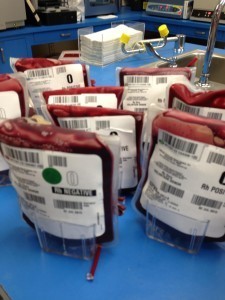
Warning: If your blood work shows you’ve already been sensitized, RhoGam and similar products aren’t for you.
RhoGAM is one brand of the generic Rh immunoglobulin (RhIg) therapy. RhIg is an injectable drug given to women with Rh-negative blood during pregnancy. The main purpose of RhIg is to prevent problems (see HDN) in case the baby has Rh-positive blood. There are many versions of this drug in 2015, but I prefer RhoGAM because it was the first and makes its drug from a selected volunteer population.
The volunteers are all Rh negative women who depended on the RhoGam product. Many have donated regularly for over 10 years. Other companies gather plasma from hundreds of unknown donors. You can read about the donors and the product on the RhoGam website.
RhIg is given to a pregnant woman with Rh-negative blood in two doses as an intramuscular injection. The first at 28 weeks and the second within 72 hours of the baby’s birth. The first dose is smaller than the second and yes, at this point the baby’s blood type is unknown.
The second dose should only be given if the baby is born RhD (Rh positive). If your baby has Rh negative blood at birth, refuse this second shot. Or demand the nurse call the doctor or ask him to visit you first. All he/she has to do is look it up at the RhoGam website. Please be aware some doctors tend to error on the side of safety if you’ve had a problem pregnancy.
RhoGam or any other version of RhIg therapy prevents your body from forming Rh antibodies, which won’t harm your first baby, but will harm any future babies you have if they’re Rh-positive. Rh antibodies lead to a baby being born with hemolytic disease of the newborn (HDN), which can cause severe anemia, blood transfusions, or death.
RhIg is also given to Rhd mothers with bleeding, abdominal trauma, amniocentesis, versions, abortion, ectopic pregnancy, molar pregnancy, miscarriage, or placental biopsy.
Again, if a blood test shows your body is already making Rh antibodies, RhIg injections won’t help. In that case, your OB doctor will keep a close eye on your baby using the old standby treatments and procedures.
When physicians added the dose at 28 weeks( 1975), the death rate from HDN became miniscule. A truly amazing feat!
Special Note: While I’ve had 3 doses of RhoGAM, I never experienced any side effects, others have. I’ve found this article written by a doctor which I think describes side effects the best. If you’re making choices on the future health of your children, consult professionals for information.
If you have concerns about getting RhoGAM injections at the 28 week point discuss your fears with your doctor. I applaud any woman who reads on a subject, consults professionals, and makes informed decisions. The important point is to clarify what bothers you before you reach 28 weeks.
For those who want to see how John Hopkins manages treatment read here. Chapter Eighteen pages 231-238. Also the algorithms used for treatment may be interesting to laymen.
My next article will trace the historical map from Idea to RhoGam for those interested. This story is amazing, incredible, and long.
Please see my other articles in the Rh negative blood series:
Related articles
 Rare Blood: Rh null
Rare Blood: Rh null
January 13, 2015
Rare Blood: Rh null
If you opened this post hoping to read something new about Rh negative blood, you’re in the wrong place. This article is about incredibly rare blood that doesn’t have the Rh system or its antigens. Null means “nothing” and is vastly different from Rhd blood. Rh null blood means the gene for the entire Rh system is missing. Didn’t think that was possible for someone to have and live? Think again.
In writing the historical articles on Rh negative blood posted on my website here, here, here, here, and here . I went back to the lab when blood type was first discovered. In 2015, some writers and bloggers are still getting the terms mixed. I hoped to bust some myths because I’d noticed wrong terms, wrong knowledge base, and wrong conclusions all over the internet on the subject of Rh negative blood. With this article, I hope to add to the database of information that layman can use.
Rh null blood fascinated me from the get go after learning it existed. If anything, its presence reveals how capricious our DNA really is. Think about this. People with Rh negative blood can donate to people with RhD (positive blood within their blood type, but they can’t take, the same RhD blood. However, Rh null blood donors can donate to anyone with any Rh negative blood type (A-, B-, O-, AB-). Unfortunately, Rh null can only receive blood from people who are also Rh null.
There are many blood systems that are null besides Rh, and these people are why there is a place called the American Rare Blood Donor program. There are one or two European sites as well. The null blood is used in research and they serve as a contact site that doctors can contact when they have a patient in need of a blood donation. Yes, the null blood is shipped world wide if needed.
Remember null is rare; neg isn’t. Rh negative blood isn’t being tracked from the cradle to the grave, but Rh null is.
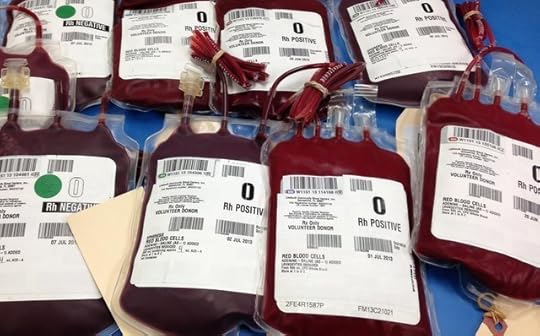
How were the people with Rh null blood discovered?
The effort to purposefully find them would be futile and expensive. For the most part they got sick, and their blood was cross matched. Or they were traced by researchers because another relative was diagnosed.
What happens to the red blood cells for Rh null to occur?
Antigens in the Rh blood group system is expressed by two proteins: RhD and RhCE. For them to work properly, they need another glycoprotein called RhAG. RhD, RhCE, and RhAG together with LW glycoprotein, IAP, C47, glycophorin B, and maybe Duffy protein to form a core complex in the red cell membrane. This core group then transports NH4/NH3 and CO2/O2 across the membrane. This means they support the normal spherical structure of the RBC so it can deliver energy to the body. In Rh null blood, the integrity of the red blood cell forms into stomacytes. Normal red cells are disc shaped and cells with Rh null blood look like a stoma or ‘open mouth.’ People with Rh null are often anemic because their red blood cells are fragile.
Read this great article on Rh null blood in The Atlantic. Notice how the writer correctly identifies the Rh system formerly known as “Rhesus.” That was great to see. I’ll celebrate when the Rhesus tag is eliminated from the vocabulary.
Please share on your social networks and if you’ve enjoyed this post, please leave a remark in the comment section.
If you read fiction consider signing up for my new book emails. As always, no spam from me.
My books are on Amazon.
January 11, 2015
The 500
Occasionally, I’m blindsided by health statistics from Africa, but 500 dead healthcare workers in the Ebola fight is sobering. These people had medical training and work on a continent known for its exotic diseases. With training and experience, they still died.
Many of them were exposed because they were humans and not robots. A crying child holds out its arms, and a healthcare worker responds. A bleeding woman falls to the ground, begging for God’s mercy, and a tired health care worker bends over to help. Sure they know the sick need to be tested and isolated, but their humanity intrudes.
They keep going to work after seeing colleagues, family, and friends die. They keep going to work when they’re bone tired. They keep going to work, knowing they could accidentally expose their loved ones. Some feel they have no choice, but I say health care workers skilled in caring for people with infectious diseases know full well they can leave and get good jobs all over the world.
They stay because they know if they step away more will sicken. They stay because the calling has grabbed them. The calling is to help the sick in their time of need. Many people don’t understand the calling, because it’s confused with the religious calling to be a priest or a pastor. I’m talking about the health care calling.
It’s a feeling that humbles a person; they believe in duty first and paychecks second. It’s a feeling of service, to the greater good, to those who are suffering in sickness. During the 1918 flu epidemic, retired nurses and doctors responded to the calls for help, because they still felt the calling.
In this story, we can see and hear the voices of the American health care workers who survived Ebola. Despite their fears, the pain, and the discrimination they’ve felt, they would take care of another Ebola patient. They would also care for any person sick of any new disease. Watch the video and you can detect the calling in their faces and in their voices.
Health care workers go daily into real battles in Africa and also in every hospital of the world. Each day they wake and go to work, knowing they pull sick people from the brink of dying. They save lives without a weapon, wait, their weapons are their body and their knowledge. Their shield is their calling to help others.
I’m proud to say they’re my colleagues.
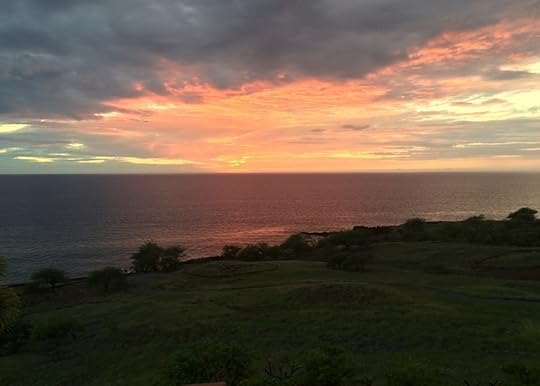
January 10, 2015
Babyland
This was supposed to automatically post two weeks ago, but I just noticed it didn’t:)) It does explain why I’ve been off social networks. Here it is!
I’m still under the sway of a riptide of emotions that only a newborn can generate.  Their perfection has a way of tugging on our heartstrings and forcing us to remember our own childhood, don’t they?
Their perfection has a way of tugging on our heartstrings and forcing us to remember our own childhood, don’t they?
I’m convinced nothing is more scary or more gratifying than gazing on the face of your first grandchild. I know…I know…the drill, but the grandchild drill feels different from the first child drill or second child drill, okay?
A different sort of pulse quickening if you will. I could stare at his sweet face for hours really, but here’s the new part. He’s dreaming!
Maybe my newborns dreamed, but I don’t remember noticing their rapid eye movement. I don’t remember wondering why they’re dreaming so soon after birth. Maybe I was drowning in a sea of sleep deprivation, but I don’t recall noticing that they were dreaming. But it does beg the question…what are newborns dreaming about?
It’s not like they stay awake long enough to get terrified, right? And that’s when it hit me. Newborns aren’t dreaming as we know it, they’re remembering what I’ve dubbed “Babyland.”

Because when he wakes from Babyland, he smiles. Okay, I know he’s not supposed to smile yet, but he did. Babyland to me is like a fantasia of colors, people, and places. Babyland keeps him amused, so the rest of his family can grab some rest.
Ah, Babyland will sadly turn into dreamland before we know it. Dreamland isn’t magical. Our dreams are just snapshots our brain fires off to clear the sludge from our heads while we sleep. Clutter. Our dreams are the litter we’ve imprinted on as we move through our day.
Newborns don’t have sludge, so they’re getting glimpses of something different, something happy. Something the rest of us may have forgotten as we experienced the new world we’re born into. We let the world shape us instead of us shaping our world. I’ve found myself hoping our vague memories of Babyland keep most of us wishing for peace on earth during the holiday season.
For those lucky ones gazing down at an infant locked in the magic of Babyland tonight, close your eyes and try to remember. Forget about how fussy he was just minutes ago. Forget about how tired you are. Focus on your hopes and dreams and maybe the magic of Babyland will rub off on you. Let’s face it the only way we’ll ever have peace on earth is if we all wake with a smile and try to make our tiny part of the world a better place.
My grandson has recharged me with hope and yes, an ache for peace on earth. Is it really an impossible dream? We’ll see.

Happy Birthday Owen!
December 01, 2014
December 1, 2014
Christmas Picture
Now that the snow is falling for all Word Press users, I thought I’d share a Christmas photo. It’s way better than listening to radio stations playing nonstop Christmas music since before Thanksgiving. Enjoy!

November 30, 2014
Unbroken: A true WW II Survivor Story
Now that rival-weekend in collegiate football is over, consider getting into the mood to see the movie Unbroken by reading The War Nurse .
.
Unbroken is the true story of Louis Zamperini, a US Olympian and WWII fighter pilot, who crashes and becomes a POW. Zamperini ended up Japan and probably shared bunk space with the Bataan POWs who sailed in the Hell Ships. Unbroken, the movie debuts 12-25-2014. Hope to see you there!
Related articles
 Angelina Jolie Says POW Film Helped With Motherhood
Angelina Jolie Says POW Film Helped With Motherhood The Hell Ships of WW II
The Hell Ships of WW II Angelina Jolie says POW film helped with motherhood
Angelina Jolie says POW film helped with motherhood Jolie pays radio tribute to Zamperini
Jolie pays radio tribute to Zamperini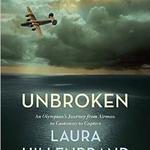 Revised ‘Unbroken’ released for young adults on Veterans Day
Revised ‘Unbroken’ released for young adults on Veterans Day Unbroken Actor Jack O’Connell Toasts ‘Her Ladyship’ Angelina Jolie at Hollywood Film Awards
Unbroken Actor Jack O’Connell Toasts ‘Her Ladyship’ Angelina Jolie at Hollywood Film Awards Angelina Jolie Covers ‘Entertainment Weekly”
Angelina Jolie Covers ‘Entertainment Weekly”
November 26, 2014
The Hell Ships of WW II
When I first heard of the Hell Ships of WW II, I thought of pirates. It took a few minutes of research to strip that cutesy idea out of my head. Hell Ships sailed from the Philippines loaded with Bataan POWs. As the survivors aged they started writing down their stories, and they were bone chilling. I immediately knew I had to put Katarina Stahl’s husband in The War Nurse on one.

First a brief recap of events after the first bombs dropped:
The military left Manila and called it a ‘open city’ for civilians, so the Japanese wouldn’t come in fighting. They didn’t. McArthur did this to save American and Filipino lives. The troops were split between Bataan and Corregidor.
Corregidor was McArthur’s stronghold. It had a massive underground tunnel system. Bataan was a malaria-infested jungle with a few structures. On Bataan the men fought eye-to-eye, and on Corregidor they faced daily bombardments underground. Food stores were kept on Corregidor. By the time General King surrendered the Bataan fighting force, they were starving to death. Corregidor did not surrender right away.
The Japanese weren’t prepared to feed and house so many men. The Bataan death march was the result. Believe me, only the strong survived. Again here is the wicki lite version of the Bataan death march.
Survivors of the death march were farmed off to POW camps. But why feed men to sit around? Japan decided to bring them to their homeland as slave labor. The Hell Ships were transport vessels. The POWs even watched Japanese families being loaded on the boats in their colorful kimonos before they were crowded into the dark and searing-hot holds below deck.

The Hell Ships didn’t immediately set sail. Heck no, they puttered around, loading and unloading for weeks. The men remained below in the cramped holding areas. They were kept where livestock were held before the war.
The only good thing about the Hell Ships is they didn’t transport all the POWs. Many were still scattered in POW camps.
One ship was torpedoed by US subs: Oryoku Maru. This is the wicki lite definition of the Hell Ships. Please be sure to read the italics under the Oryoku Maru. If that’s not hell, what is? It’s the only Hell Ship to be torpedoed by a US sub, giving the POWs a brief opportunity to escape. Some made it home, many died, and others were picked out of the water and reloaded on other Hell ships. The men who survived the Hell ships and didn’t escape or die became slave laborers and some were tortured in medical experiments.
December 7th for me is a time to remember the Battlin’ Bastards of Bataan, their death march trek, and they’re hellacious sail to Japan. I won’t forget and people who read their stories won’t forget either.
Have you ever heard of the Hell Ships?
To read what happened to Jack Gallagher on the Oryoku Maru, you’ll have to read The War Nurse.
Please check out the War Nurse’s virtual book tour and leave your comments on the book blogs that host it. Here’s a link to where you can find The War Nurse on Tour by date.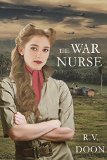

Related articles
 Bataan Death March survivor looks back … and ahead
Bataan Death March survivor looks back … and ahead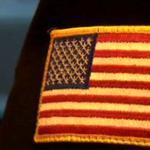 Bataan Death March survivor honored at Hayden parade
Bataan Death March survivor honored at Hayden parade
November 20, 2014
Apologies to Readers: Free promotion error
I’ve taken out ads to make The War Nurse Free today (11-20)and tomorrow(11-21), but I failed to check to make sure all systems were go. I’m sorry. I’ve extended the free promotion in hopes to right this error. I apologize to readers of historical fiction and hope you’ll recheck for the pricing change beginning 11-21.
I hoped an Amazon worker would notice my begging emails and extend a helping hand, but that didn’t happen. I guess they never make errors or need help there. The War Nurse is free beginning 11-21-11-24. Again, I apologize to everyone that saw the free ads for today.



